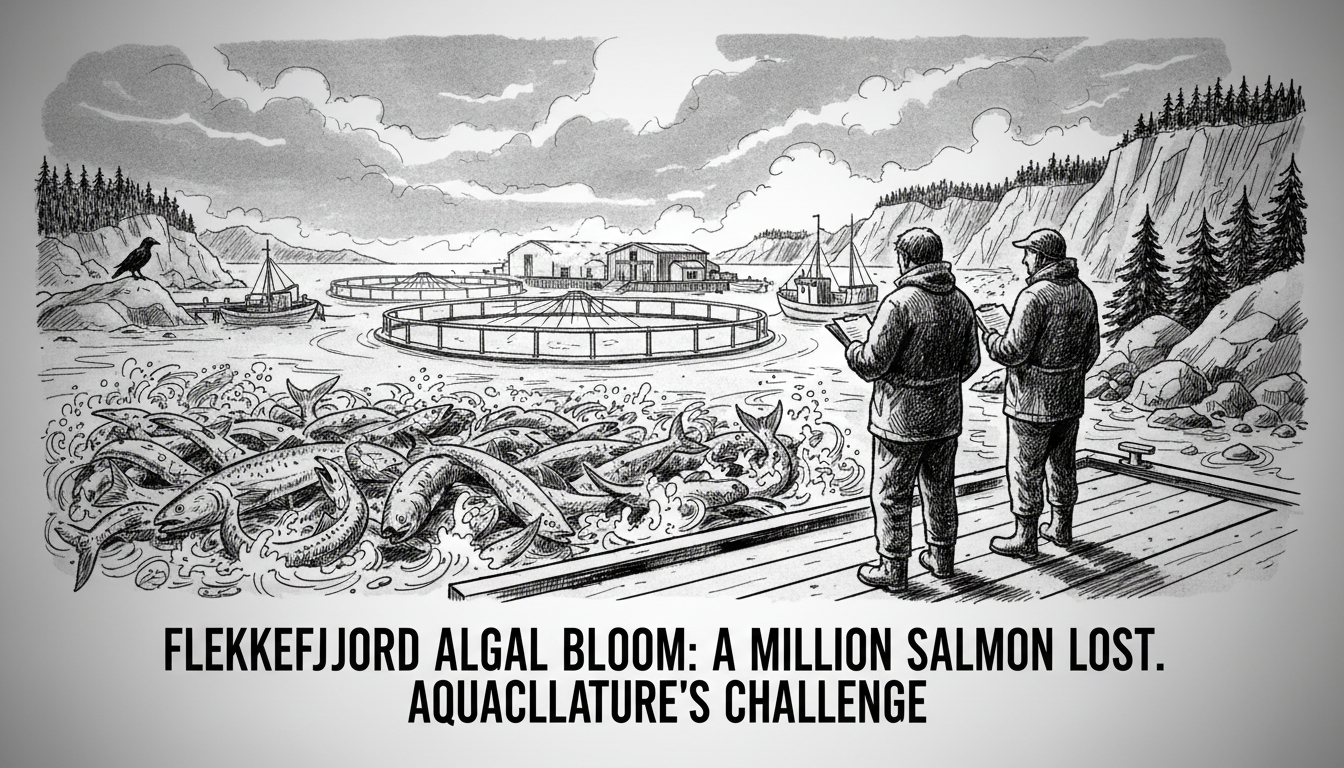A severe algal bloom in October caused mass deaths of farmed salmon in Flekkefjord, Norway. Approximately 1.15 million salmon perished in the incident. This represents about 15 percent of all fish at the Mowi facility in the area.
The financial impact ranges between 150 and 200 million Norwegian kroner. Mowi officials stated the deaths resulted from multiple factors. They cited algae, jellyfish, oxygen fluctuations, and poor gill health as contributing causes.
Norwegian aquaculture companies face regular challenges from environmental conditions. Algal blooms occur when certain microorganisms multiply rapidly in water. These events can deplete oxygen and release toxins harmful to marine life.
Mowi now dedicates substantial resources to learning from this event. The company aims to prevent similar incidents in future operations. Norway's fish farming industry represents a major economic sector. The country leads global salmon exports, supplying markets across Europe and North America.
This incident highlights ongoing environmental pressures on aquaculture. Fish farming operations must balance production with sustainable practices. Norwegian regulations require companies to monitor water quality and fish health continuously.
The Flekkefjord location sits in southern Norway's aquaculture heartland. This region produces substantial quantities of farmed salmon yearly. Local communities depend on fish farming for employment and economic stability.
International consumers may see limited supply impacts from this event. Major producers like Mowi typically distribute losses across global markets. The company maintains multiple facilities throughout Norway's fjord system.
Norwegian authorities monitor such incidents closely. They work with companies to improve environmental safeguards. Recent years have seen increased focus on sustainable aquaculture practices.
What does this mean for Norway's fishing industry? The sector continues growing despite environmental challenges. Companies invest in new technologies to protect fish stocks. They develop better monitoring systems and response protocols.
The financial loss represents a substantial hit for Mowi's local operations. Insurance may cover portions of the damage. The company must rebuild stocks and restore production capacity.
Local environmental conditions in Norwegian fjords remain unpredictable. Climate change may increase frequency of algal blooms. Warmer waters often encourage rapid microorganism growth.
Norwegian salmon farming has transformed coastal economies over decades. The industry provides jobs in remote communities. It also faces criticism from environmental groups concerned about ecosystem impacts.
This incident shows how natural events can disrupt carefully managed operations. Even major companies struggle against environmental forces. The balance between production and sustainability remains challenging.
Mowi's response will interest industry observers worldwide. Other salmon farming nations face similar challenges. Solutions developed in Norway often influence global aquaculture practices.

